New UN websites & publications
Coronavirus Disease (COVID-19)
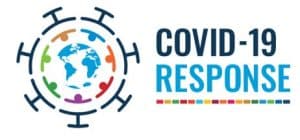
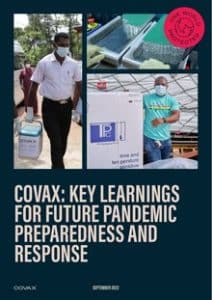 COVAX: Key learnings for future pandemic preparedness and response (WHO)
COVAX: Key learnings for future pandemic preparedness and response (WHO)
https://www.who.int/publications/m/item/covax–key-learnings-for-future-pandemic-preparedness-and-response
This white paper outlines three key COVAX learnings for future pandemic preparedness and response. Drawing upon COVAX’s unique experience enabling an unprecedented global rollout at scale during a pandemic, it highlights challenges encountered and subsequent impact on equitable access to COVID-19 vaccines, the actions COVAX took in response and recommendations for the future.
From Double Shock to Double Recovery: Health Financing in the Time of COVID-19 (World Bank)
https://www.worldbank.org/en/topic/health/publication/from-double-shock-to-double-recovery-health-financing-in-the-time-of-covid-19
The “Double Shock, Double Recovery” discussion paper was initially published in March 2021 in the midst of the COVID-19 pandemic. A technical update of the paper followed in September 2021. The latest update “Old Scars, New Wounds,” which takes into account the economic impact of the war in Ukraine, was published in September 2022.
Guide to evaluating behaviourally and culturally informed health interventions in complex settings (WHO/Europe)
https://www.who.int/europe/publications/i/item/WHO-EURO-2022-6045-45810-65956
COVID-19 has demonstrated beyond doubt the important role that our behaviours and cultural contexts can play in the face of a health challenge. More and more governments are therefore beginning to look seriously at designing and implementing public health interventions that are informed by behavioural and cultural insights (BCI). However, evaluating these interventions, to make sure that they work as intended, can be difficult, particularly when time and money are limited. WHO/Europe has now published its “Guide to evaluating behaviourally and culturally informed health interventions in complex settings”. It provides detailed information on how to evaluate the effectiveness and sustainability of BCI interventions, particularly when the conditions for attaining conclusive proof are difficult or impossible to meet. Instead, using contribution analysis as a starting point, this new WHO guide walks its readers through the process of creating an evidence-informed claim for the effect of the intervention.
Risk communication and community engagement: a compendium of case studies in times of COVID-19 (WHO/Europe)
https://www.who.int/europe/publications/i/item/WHO-EURO-2022-6186-45951-66353
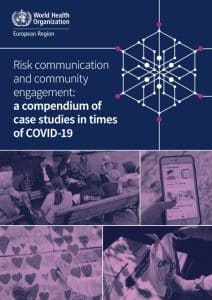 A compendium of 18 case studies looking at how risk communication and community engagement (RCCE) has been used in the WHO European Region during the COVID-19 pandemic has been published on 5 October 2022. It is the first time the use of RCCE during a health emergency has been documented in such a detailed, practical way in so many diverse settings. Based on interviews with nearly 80 frontline practitioners, it provides a wealth of insights and practical experience on how health authorities can use RCCE to help save lives during emergencies. Collectively, the case studies highlight how having well-designed RCCE interventions has been a major factor in the successful implementation of a variety of COVID-19 public health measures, from testing, contact tracing and hygiene measures, through to the roll-out of vaccines. The countries and territories featured in the case studies are: Armenia, Azerbaijan, Bosnia and Herzegovina, Bulgaria, Finland, France, Georgia, Ireland, Israel, Kazakhstan, Kyrgyzstan, North Macedonia, Romania, Russian Federation, Sweden, Ukraine, United Kingdom (Scotland) and Kosovo.
A compendium of 18 case studies looking at how risk communication and community engagement (RCCE) has been used in the WHO European Region during the COVID-19 pandemic has been published on 5 October 2022. It is the first time the use of RCCE during a health emergency has been documented in such a detailed, practical way in so many diverse settings. Based on interviews with nearly 80 frontline practitioners, it provides a wealth of insights and practical experience on how health authorities can use RCCE to help save lives during emergencies. Collectively, the case studies highlight how having well-designed RCCE interventions has been a major factor in the successful implementation of a variety of COVID-19 public health measures, from testing, contact tracing and hygiene measures, through to the roll-out of vaccines. The countries and territories featured in the case studies are: Armenia, Azerbaijan, Bosnia and Herzegovina, Bulgaria, Finland, France, Georgia, Ireland, Israel, Kazakhstan, Kyrgyzstan, North Macedonia, Romania, Russian Federation, Sweden, Ukraine, United Kingdom (Scotland) and Kosovo.
Support for rehabilitation: self-management after COVID-19-related illness; Second edition (WHO)
English, French, Dutch, German, Italian, Portuguese, plus additional languages: https://apps.who.int/iris/handle/10665/344472
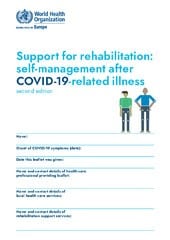 Recognizing early that rehabilitation would be essential for many in their recovery from COVID-19 infection, WHO/Europe quickly convened experts and people recovering from COVID-19 to produce the patient leaflet ‘Support for rehabilitation: self-management after COVID-19-related illness’. The resource provides evidence-based support and advice for adults who are recovering from COVID-19, whether hospitalized or not. It compliments care received from health care professionals and can be tailored to an individual’s needs. The leaflet provides information for patients on considerations for their rehabilitation on a wide range of areas, such as managing breathlessness, physical activity and exercise, energy conservation and fatigue. There is also a helpful symptom tracker. The first edition was published in July 2020 and proved to be such a valuable resource to countries that it has been translated into 17 languages. In 2020 it was WHO/Europe’s second most downloaded document in Polish, with 175 000 downloads, and the English version was ranked as its fourth most popular publication.
Recognizing early that rehabilitation would be essential for many in their recovery from COVID-19 infection, WHO/Europe quickly convened experts and people recovering from COVID-19 to produce the patient leaflet ‘Support for rehabilitation: self-management after COVID-19-related illness’. The resource provides evidence-based support and advice for adults who are recovering from COVID-19, whether hospitalized or not. It compliments care received from health care professionals and can be tailored to an individual’s needs. The leaflet provides information for patients on considerations for their rehabilitation on a wide range of areas, such as managing breathlessness, physical activity and exercise, energy conservation and fatigue. There is also a helpful symptom tracker. The first edition was published in July 2020 and proved to be such a valuable resource to countries that it has been translated into 17 languages. In 2020 it was WHO/Europe’s second most downloaded document in Polish, with 175 000 downloads, and the English version was ranked as its fourth most popular publication.
Economic Growth and Sustainable Development
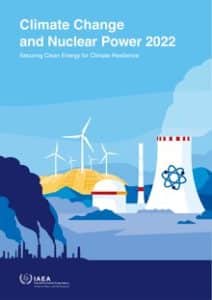 Climate Change and Nuclear Power 2022: Securing Clean Energy for Climate Resilience (IAEA)
Climate Change and Nuclear Power 2022: Securing Clean Energy for Climate Resilience (IAEA)
https://www.iaea.org/sites/default/files/iaea-ccnp2022-body-web.pdf
The 2022 edition of Climate Change and Nuclear Power, which is updated every two years and provides a wealth of technical information and data about the benefits of nuclear power in contributing to achieving net zero greenhouse gas emissions by 2050. This year’s publication features a chapter on nuclear power in Africa.
E-Government Survey 2022: The Future of Digital Government (UN/DESA)
https://publicadministration.un.org/en/Research/UN-e-Government-Surveys
 Despite the multiple crises of the past two years, countries and municipalities have remained committed to pursuing digital government strategies — many implemented specifically to address the impacts of the COVID-19 pandemic. Yet, many have fallen short in providing adequate online services, according to the 2022 edition of the United Nations E-Government Survey on 28 September 2022. Denmark, Finland and the Republic of Korea lead the 2022 digital government ranking of the 193 United Nations Member States, scoring the highest when it comes to the scope and quality of online services, the status of telecommunication infrastructure and existing human capacity. Runners-up are New Zealand, Sweden, Iceland, Australia, Estonia, the Netherlands, the United States, the United Kingdom, Singapore, the United Arab Emirates, Japan and Malta. According to the 2022 Survey, the number of countries providing digital services in the education sector has increased by 22 per cent, from 104 to 114 countries. However, while the adoption of digital solutions in response to the COVID-19 pandemic has contributed to this growth, there has been uneven progress across different regions and different income levels. The recent Transforming Education Summit placed a spotlight on the critical role that equitable access to digital learning can play in advancing sustainable development.
Despite the multiple crises of the past two years, countries and municipalities have remained committed to pursuing digital government strategies — many implemented specifically to address the impacts of the COVID-19 pandemic. Yet, many have fallen short in providing adequate online services, according to the 2022 edition of the United Nations E-Government Survey on 28 September 2022. Denmark, Finland and the Republic of Korea lead the 2022 digital government ranking of the 193 United Nations Member States, scoring the highest when it comes to the scope and quality of online services, the status of telecommunication infrastructure and existing human capacity. Runners-up are New Zealand, Sweden, Iceland, Australia, Estonia, the Netherlands, the United States, the United Kingdom, Singapore, the United Arab Emirates, Japan and Malta. According to the 2022 Survey, the number of countries providing digital services in the education sector has increased by 22 per cent, from 104 to 114 countries. However, while the adoption of digital solutions in response to the COVID-19 pandemic has contributed to this growth, there has been uneven progress across different regions and different income levels. The recent Transforming Education Summit placed a spotlight on the critical role that equitable access to digital learning can play in advancing sustainable development.
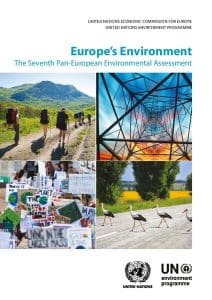 Europe’s Environment: The Seventh Pan-European Environmental Assessment (UNECE / UNEP)
Europe’s Environment: The Seventh Pan-European Environmental Assessment (UNECE / UNEP)
https://wedocs.unep.org/20.500.11822/40733
https://unece.org/sites/default/files/2022-10/brochure%202212718_E_ECE_CEP_NONE_2022_3_WEB.pdf
“Introduction: The secretariat of the United Nations Economic Commission for Europe (ECE) and the United Nations Environment Programme (UNEP) have prepared a limited indicator-based and thematic pan-European environmental assessment upon the request of the ECE Committee on Environmental Policy, as input to the Ninth Environment for Europe Ministerial Conference (Nicosia, 5–7 October 2022). The seventh pan-European environmental assessment reports that progress has been achieved in environmental protection in certain areas, but significant shortcomings remain and pose a threat to the health of both people and the environment in the pan-European region. The summary for policymakers highlights a series of key issues and recommendations from the body of the assessment report. The assessment covers the period until the end of 2021.”
The global forest sector outlook 2050: Assessing future demand and sources of timber for a sustainable economy (FAO)
https://www.fao.org/documents/card/en/c/cc2265en
Overall consumption of primary processed wood products is expected to grow 37 percent by 2050 in a business-as-usual scenario, a report published on 4 October 2022 by the Food and Agriculture Organization of the United Nations (FAO) said. Consumption of primary processed wood products – sawnwood, veneer/plywood, particle/fibreboard and wood pulp – is predicted to total 3.1 billion cubic metres of roundwood equivalents – a measure of logs used in the making of wood-based products – by 2050, according to the report. The increase in consumption will be at least 8 percent higher in a bioeconomy scenario when two modern wood products are considered – mass timber and manmade cellulose fibres – substituting non-renewable materials. In a scenario of a more accelerated transition to the bioeconomy with a stronger participation of these two products, the rise in consumption of primary wood products could reach 23 percent more than in the business-as-usual scenario.
Global guidance framework for the responsible use of the life sciences: mitigating biorisks and governing dual-use research (WHO)
https://www.who.int/publications/i/item/9789240056107
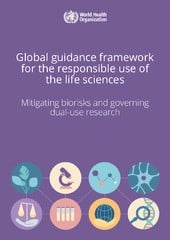 This Framework, issued on 13 September 2022, calls on leaders and other stakeholders to mitigate biorisks and safely govern dual-use research, which has a clear benefit but can be misused to harm humans, other animals, agriculture and the environment. This is the first global, technical and normative framework for informing the development of national frameworks and approaches for mitigating biorisks and governing dual-use research. It aims to safely unlock the great promise for new and improved ways to improve global health offered by life sciences and related technologies. The Framework addresses the decades-long challenges of preventing the accidental and deliberate misuse of biology and other life sciences, as well as how to manage governance and oversight to both accelerate and spread innovation, while mitigating negative impacts. The life sciences are increasingly crossing over with other fields, such as chemistry, artificial intelligence and nanotechnology, which changes the landscape of risks, with those that span multiple sectors and disciplines more likely to be missed.
This Framework, issued on 13 September 2022, calls on leaders and other stakeholders to mitigate biorisks and safely govern dual-use research, which has a clear benefit but can be misused to harm humans, other animals, agriculture and the environment. This is the first global, technical and normative framework for informing the development of national frameworks and approaches for mitigating biorisks and governing dual-use research. It aims to safely unlock the great promise for new and improved ways to improve global health offered by life sciences and related technologies. The Framework addresses the decades-long challenges of preventing the accidental and deliberate misuse of biology and other life sciences, as well as how to manage governance and oversight to both accelerate and spread innovation, while mitigating negative impacts. The life sciences are increasingly crossing over with other fields, such as chemistry, artificial intelligence and nanotechnology, which changes the landscape of risks, with those that span multiple sectors and disciplines more likely to be missed.
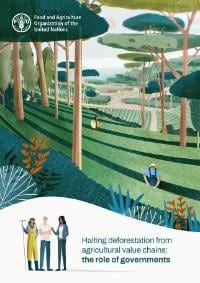 Halting deforestation from agricultural value chains: the role of governments (FAO)
Halting deforestation from agricultural value chains: the role of governments (FAO)
https://www.fao.org/documents/card/en/c/cc2262en/
This paper summarizes the current state of concepts and approaches for addressing deforestation in the trade, marketing, and production of agricultural commodities that have a disproportionate impact on forests at international, national, and landscape level. To date, predominant attention has been directed towards the role of the private sector and “consumer countries” that shape market regulation. This publication aims to complement the international discourse by generating a greater focus on the role of “producer country” governments at the national and local level to support efforts to decouple agricultural production from deforestation.
Health and care workforce in Europe: time to act (WHO/Europe)
https://apps.who.int/iris/handle/10665/362379
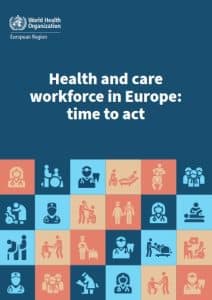 All countries of the WHO European Region – encompassing 53 Member States across Europe and central Asia – currently face severe challenges related to the health and care workforce, according to a new report released on 14 September 2022 by WHO/Europe. An ageing workforce is chief among them. The analysis finds that 13 of the 44 countries that reported data on this issue have a workforce in which 40% of medical doctors are already aged 55 years or older. An ageing health and care workforce was a serious problem before the COVID-19 pandemic, but is even more concerning now, with severe burnout and demographic factors contributing to an ever-shrinking labour force. Adequately replacing retiring doctors and other health and care workers will be a significant policy concern for governments and health authorities in the coming years. WHO/Europe is urging countries to act now to train, recruit and retain the next generation of health and care workers. Another key finding of the report is the poor mental health of this workforce in the Region. Long working hours, inadequate professional support, serious staff shortages, and high COVID-19 infection and death rates among frontline workers – especially during the pandemic’s early stages – have left a mark. Health worker absences in the Region increased by 62% amid the first wave of the pandemic in March 2020, and mental health issues were reported in almost all countries in the Region. In some countries, over 80% of nurses reported some form of psychological distress caused by the pandemic. WHO/Europe received reports that as many as 9 out of 10 nurses had declared their intention to quit their jobs.
All countries of the WHO European Region – encompassing 53 Member States across Europe and central Asia – currently face severe challenges related to the health and care workforce, according to a new report released on 14 September 2022 by WHO/Europe. An ageing workforce is chief among them. The analysis finds that 13 of the 44 countries that reported data on this issue have a workforce in which 40% of medical doctors are already aged 55 years or older. An ageing health and care workforce was a serious problem before the COVID-19 pandemic, but is even more concerning now, with severe burnout and demographic factors contributing to an ever-shrinking labour force. Adequately replacing retiring doctors and other health and care workers will be a significant policy concern for governments and health authorities in the coming years. WHO/Europe is urging countries to act now to train, recruit and retain the next generation of health and care workers. Another key finding of the report is the poor mental health of this workforce in the Region. Long working hours, inadequate professional support, serious staff shortages, and high COVID-19 infection and death rates among frontline workers – especially during the pandemic’s early stages – have left a mark. Health worker absences in the Region increased by 62% amid the first wave of the pandemic in March 2020, and mental health issues were reported in almost all countries in the Region. In some countries, over 80% of nurses reported some form of psychological distress caused by the pandemic. WHO/Europe received reports that as many as 9 out of 10 nurses had declared their intention to quit their jobs.
Invisible numbers: The true extent of noncommunicable diseases and what to do about them (WHO)
https://www.who.int/teams/noncommunicable-diseases/invisible-numbers
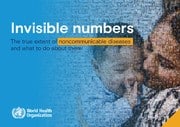 From heart disease to cancer and diabetes, noncommunicable diseases (NCDs) now outnumber infectious diseases as the “top killers globally,” the UN health agency said in a new report, released on Wednesday, with one person under 70 dying every two seconds from an NCD. The report and new data portal, was launched on the sidelines of the 77th session of the General Assembly, at an event co-organized by the World Health Organization (WHO) together with Bloomberg philanthropies. NCDs constitute one of the greatest health and development challenges of this century, according to WHO. Chief among them are cardiovascular diseases, such as heart disease and stroke; cancer; and diabetes and chronic respiratory diseases – as well as mental health illnesses. Together they account for nearly three-quarters of deaths in the world, taking 41 million lives every year. The report highlights NCDs statistics to illustrate the true scale of the threats and risk factors they pose. It also shows cost-effective and globally applicable interventions that can lower those numbers and save lives and money.
From heart disease to cancer and diabetes, noncommunicable diseases (NCDs) now outnumber infectious diseases as the “top killers globally,” the UN health agency said in a new report, released on Wednesday, with one person under 70 dying every two seconds from an NCD. The report and new data portal, was launched on the sidelines of the 77th session of the General Assembly, at an event co-organized by the World Health Organization (WHO) together with Bloomberg philanthropies. NCDs constitute one of the greatest health and development challenges of this century, according to WHO. Chief among them are cardiovascular diseases, such as heart disease and stroke; cancer; and diabetes and chronic respiratory diseases – as well as mental health illnesses. Together they account for nearly three-quarters of deaths in the world, taking 41 million lives every year. The report highlights NCDs statistics to illustrate the true scale of the threats and risk factors they pose. It also shows cost-effective and globally applicable interventions that can lower those numbers and save lives and money.
Oslo Medicines Initiative Technical Reports
https://www.who.int/europe/initiatives/the-oslo-medicines-initiative/technical-reports
As health-care budgets continue to be strained by the current state of the global economy, with the issue of access to expensive novel medicines persisting across the WHO European Region, WHO/Europe has released a series of technical reports calling for improved access to treatments. Published as part of the Oslo Medicines Initiative (OMI) – a joint initiative of WHO/Europe and the Government of Norway launched in 2020 – the new documents analyse current evidence and put forward potential policies that can help people access some of these novel, yet high-priced, medicines.
Renewable Energy and Jobs: Annual Review 2022 (ILO)
https://www.ilo.org/global/publications/books/WCMS_856649/lang–en/index.htm
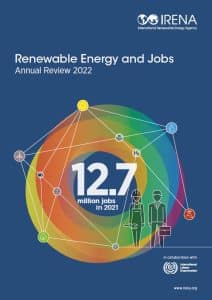 Worldwide employment in renewable energy reached 12.7 million last year, a jump of 700,000 new jobs in one year, despite the lingering effects of COVID-19 and the growing energy crisis, according to a new report. It identifies domestic market size as a major factor influencing employment generation in renewables, along with labour and other costs. Solar energy was found to be the fastest-growing sector. In 2021 it provided 4.3 million jobs, more than a third of the current global workforce in renewable energy. The new report was published by the International Renewable Energy Agency (IRENA) in collaboration with the International Labour Organization (ILO), during the Global Clean Energy Action Forum in Pittsburgh, USA.
Worldwide employment in renewable energy reached 12.7 million last year, a jump of 700,000 new jobs in one year, despite the lingering effects of COVID-19 and the growing energy crisis, according to a new report. It identifies domestic market size as a major factor influencing employment generation in renewables, along with labour and other costs. Solar energy was found to be the fastest-growing sector. In 2021 it provided 4.3 million jobs, more than a third of the current global workforce in renewable energy. The new report was published by the International Renewable Energy Agency (IRENA) in collaboration with the International Labour Organization (ILO), during the Global Clean Energy Action Forum in Pittsburgh, USA.
Roadmap to carbon neutrality for Europe, North America, and Central Asia (UNECE)
https://unece.org/sites/default/files/2022-09/Technology%20Interplay_final_2.pdf
Bold and sustained action must start now and maximize the use of all low- and zero-carbon technologies if we are to achieve carbon neutrality by 2050, warns the new report released on 19 September 2022 by UNECE in the lead up to critical climate talks at COP27. The report, which builds on the input from international experts and data scientists from across Europe, North America, and Central Asia, identifies a range of technology and policy solutions for the region to attain carbon neutrality by 2050 despite the current energy and geopolitical crises. It finds that investment in energy as % of Gross Domestic Product would need to increase from 1.24% in 2020 to 2.05% per year from 2025 until 2050. This values the investment needed at between USD 44.8 and 47.3 trillion by 2050, with any additional delay in taking action adding to the bill. As exemplified by the exponential costs of extreme weather events registered this summer and over the past years, inaction bears a much higher cost on society.
Solving the Equation: Helping girls and boys learn mathematics (UNICEF)
https://www.unicef.org/reports/solving-equation
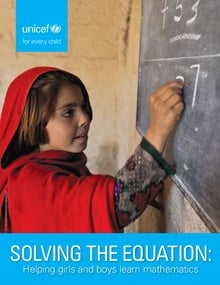 We are in a learning crisis: more than half of the world’s 10-year-olds cannot read a simple text, and COVID-19 will likely further deepen this crisis. The situation is similarly dire when it comes to mathematics, the other knowledge domain singled out, alongside reading, for global monitoring by the Sustainable Development Goals. Girls worldwide are lagging behind boys in mathematics, with sexism and gender stereotypes among the root causes. This report features new data analyses covering more than 100 countries and territories. It finds that boys have up to 1.3 times the odds of obtaining mathematics skills compared to girls. Gender stereotypes regarding girls’ innate inability to understand mathematics held by teachers, parents and peers are contributing to the disparity. Negative stereotypes play out in girls’ self-confidence, setting them up for failure. The RAPID approach can help us recover from the crisis and pivot to a transformation of education.
We are in a learning crisis: more than half of the world’s 10-year-olds cannot read a simple text, and COVID-19 will likely further deepen this crisis. The situation is similarly dire when it comes to mathematics, the other knowledge domain singled out, alongside reading, for global monitoring by the Sustainable Development Goals. Girls worldwide are lagging behind boys in mathematics, with sexism and gender stereotypes among the root causes. This report features new data analyses covering more than 100 countries and territories. It finds that boys have up to 1.3 times the odds of obtaining mathematics skills compared to girls. Gender stereotypes regarding girls’ innate inability to understand mathematics held by teachers, parents and peers are contributing to the disparity. Negative stereotypes play out in girls’ self-confidence, setting them up for failure. The RAPID approach can help us recover from the crisis and pivot to a transformation of education.
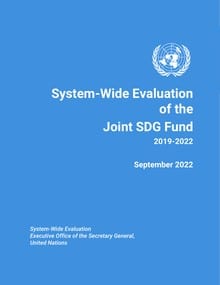 System-Wide Evaluation of the Joint SDG Fund: 2019-2022: September 2022
System-Wide Evaluation of the Joint SDG Fund: 2019-2022: September 2022
https://unsdg.un.org/resources/system-wide-evaluation-joint-sdg-fund-2019-2022
The overarching purpose of the system-wide evaluation of the Joint SDG Fund is to address the progress of results, assess how the Fund has positioned itself to achieve its strategic objectives, and be forward-looking in terms of its future strategic objective of catalysing and influencing larger funding for achieving SDGs as outlined in the Fund’s Terms of Reference (ToR). The evaluation makes recommendations on how to better position the Joint SDG Fund within the UN Sustainable Development Group (UNSDG) and the wider development context and better manage the Fund to accelerate UN collaborative action to support developing countries during the Decade of Action.
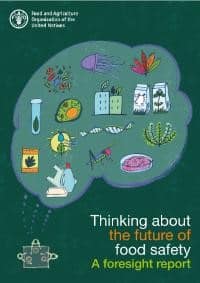 Thinking about the future of food safety: A foresight report (FAO)
Thinking about the future of food safety: A foresight report (FAO)
https://www.fao.org/documents/card/en/c/cb8667en/
In this publication, the FAO Food Safety Foresight programme provides an overview of the major global drivers and trends by describing their implications for food safety in particular and for agrifood systems by extrapolation. The various drivers and trends reported include climate change, changing consumer behaviour and preferences, new food sources and production systems, technological advances, microbiome, circular economy, food fraud, among others. The intended audience for this publication is broad – from the policymakers, academia, food business operators, private sector, to all of us, the consumers.
Trade and Development Report 2022: Development prospects in a fractured world: Global disorder and regional responses (UNCTAD)
https://unctad.org/tdr2022
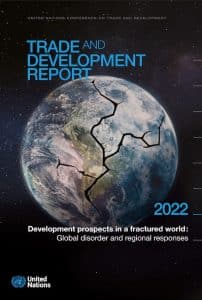 Monetary and fiscal policy moves in advanced economies risk pushing the world towards global recession and prolonged stagnation, inflicting worse damage than the financial crisis in 2008 and the COVID-19 shock in 2020, the UN Conference on Trade and Development (UNCTAD) warns on 3 October 2022 in its “Trade and Development Report 2022”. According to the report, rapid interest rate increases and fiscal tightening in advanced economies combined with the cascading crises resulting from the COVID pandemic and the war in Ukraine have already turned a global slowdown into a downturn with the desired soft landing looking unlikely. In a decade of ultra-low interest rates, central banks consistently fell short of inflation targets and failed to generate healthier economic growth. Any belief that they will be able to bring down prices by relying on higher interest rates without generating a recession is, the report suggests, an imprudent gamble. At a time of falling real wages, fiscal tightening, financial turbulence and insufficient multilateral support and coordination, excessive monetary tightening could usher in a period of stagnation and economic instability for many developing countries and some developed ones. This year’s interest rate hikes in the United States are set to cut an estimated $360 billion of future income for developing countries (excluding China) and signal even more trouble ahead, the report warns.
Monetary and fiscal policy moves in advanced economies risk pushing the world towards global recession and prolonged stagnation, inflicting worse damage than the financial crisis in 2008 and the COVID-19 shock in 2020, the UN Conference on Trade and Development (UNCTAD) warns on 3 October 2022 in its “Trade and Development Report 2022”. According to the report, rapid interest rate increases and fiscal tightening in advanced economies combined with the cascading crises resulting from the COVID pandemic and the war in Ukraine have already turned a global slowdown into a downturn with the desired soft landing looking unlikely. In a decade of ultra-low interest rates, central banks consistently fell short of inflation targets and failed to generate healthier economic growth. Any belief that they will be able to bring down prices by relying on higher interest rates without generating a recession is, the report suggests, an imprudent gamble. At a time of falling real wages, fiscal tightening, financial turbulence and insufficient multilateral support and coordination, excessive monetary tightening could usher in a period of stagnation and economic instability for many developing countries and some developed ones. This year’s interest rate hikes in the United States are set to cut an estimated $360 billion of future income for developing countries (excluding China) and signal even more trouble ahead, the report warns.
Trade in biodiversity-based products (UNCTAD)
English: https://unctadstat.unctad.org/EN/biotrade.html
French: https://unctadstat.unctad.org/FR/Biotrade.html
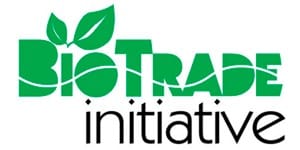 UNCTAD launched on 23 September 2022 a new online tool with groundbreaking data on global imports and exports of biodiversity-based products. These include natural foods, cosmetics, handicrafts, natural medicines and ecotourism. The trade and biodiversity statistical tool provides consistent, complete, harmonized and comparable data and related indicators on 1,814 such products for any country and year since 2010. It comprises a database of trade statistics on biodiversity-based products and a web site with interactive maps and charts on how countries import and export them. It’s hosted on UNCTAD’s statistics portal UNCTADstat.
UNCTAD launched on 23 September 2022 a new online tool with groundbreaking data on global imports and exports of biodiversity-based products. These include natural foods, cosmetics, handicrafts, natural medicines and ecotourism. The trade and biodiversity statistical tool provides consistent, complete, harmonized and comparable data and related indicators on 1,814 such products for any country and year since 2010. It comprises a database of trade statistics on biodiversity-based products and a web site with interactive maps and charts on how countries import and export them. It’s hosted on UNCTAD’s statistics portal UNCTADstat.
United in Science 2022: A multi-organization high-level compilation of the most recent science related to climate change, impacts and responses
https://library.wmo.int/index.php?lvl=notice_display&id=22128
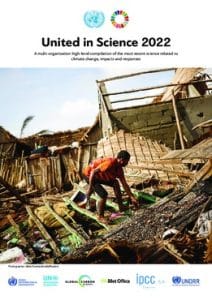 Climate science is clear: we are heading in the wrong direction, according to a new multi-agency report coordinated by the World Meteorological Organization (WMO), which highlights the huge gap between aspirations and reality. Without much more ambitious action, the physical and socioeconomic impacts of climate change will be increasingly devastating, it warns. The report, released on 13 September 2022, shows that greenhouse gas concentrations continue to rise to record highs. Fossil fuel emission rates are now above pre-pandemic levels after a temporary drop due to lockdowns. The ambition of emissions reduction pledges for 2030 needs to be seven times higher to be in line with the 1.5 °C goal of the Paris Agreement.
Climate science is clear: we are heading in the wrong direction, according to a new multi-agency report coordinated by the World Meteorological Organization (WMO), which highlights the huge gap between aspirations and reality. Without much more ambitious action, the physical and socioeconomic impacts of climate change will be increasingly devastating, it warns. The report, released on 13 September 2022, shows that greenhouse gas concentrations continue to rise to record highs. Fossil fuel emission rates are now above pre-pandemic levels after a temporary drop due to lockdowns. The ambition of emissions reduction pledges for 2030 needs to be seven times higher to be in line with the 1.5 °C goal of the Paris Agreement.
WCO/WTO Study Report on Disruptive Technologies
https://www.wto.org/english/res_e/booksp_e/wco-wto_e.pdf
A joint publication entitled “Study Report on Disruptive Technologies” was launched by WTO Director-General Ngozi Okonjo-Iweala and World Customs Organization (WCO) Secretary-General Kunio Mikuriya at a virtual event on 3 October 2022. The publication reviews how so-called disruptive technologies, such as blockchain, the Internet of Things, artificial intelligence and machine learning, can help to improve the conduct of international trade and border management.
International Peace and Security
Concept note for the Security Council debate on the theme “Peace and Security in Africa: strengthening the fight against the financing of armed groups and terrorists through the illicit trafficking of natural resources”
English, French & Spanish: https://undocs.org/S/2022/728
The President of the Security Council for the month of October 2022, Gabon convened a Security Council debate on 6 October 2022 on the theme “Peace and security in Africa: strengthening the fight against the financing of armed groups and terrorists through the illicit trafficking of natural resources”. In order to guide the discussions on the topic, Gabon has prepared this concept note.
Concept note for the Security Council debate on the theme “Cooperation between the United Nations and regional and subregional organizations (African Union): commemorating the twentieth anniversary of the African Union, building a constructive multipolar world”
English, French & Spanish: https://undocs.org/S/2022/736
The President of the Security Council for the month of October 2022, Gabon will convene a Security Council debate on 11 October 2022 on the theme “Cooperation between the United Nations and regional and subregional organizations (African Union): commemorating the twentieth anniversary of the African Union, building a constructive multipolar world”. In order to guide the discussions on the topic, Gabon has prepared this concept note.
Concept note for the Security Council debate on the theme “Threats to international peace and security: climate and security in Africa”
English, French & Spanish: https://undocs.org/S/2022/737
The President of the Security Council for the month of October 2022, Gabon will convene a Security Council debate on 12 October 2022 on the theme “Threats to international peace and security: climate and security in Africa”. In order to guide the discussions on the topic, Gabon has prepared this concept note.
Guidance on Mediation of Ceasefires (DPPA)
https://peacemaker.un.org/thematic-areas/ceasefires-security-arrangements
The United Nations and peacemakers the world over have accumulated a wealth of experience on mediating or facilitating ceasefires. Much of that valuable know-how is now available for the first time in one place, in a Guidance produced by the Department of Political and Peacebuilding Affairs (DPPA). Launched on 14 September 2022, the Guidance draws on the extensive knowledge of ceasefire experts and mediation practitioners, both from the United Nations and beyond. While, as the Guidance notes, “every ceasefire mediation is unique,” it presents a set of standard tools and approaches that can be deployed to strengthen such agreements in any setting, from temporary and definitive ceasefires to humanitarian pauses.
Ukraine Rapid Damage and Needs Assessment, August 2022
https://openknowledge.worldbank.org/handle/10986/37988
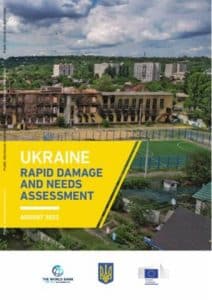 The Russian Federation’s invasion of Ukraine, which began 24 February 2022, has caused significant civilian casualties and damage to infrastructure and has taken a severe human, social, and economic toll. As a result of the war, which still continues after more than six months, dwellings and public infrastructure have been demolished or damaged, public services and economic activity have been impeded, and significant numbers of Ukrainians have been displaced from their homes. This Rapid Damage and Needs Assessment (RDNA) is part of an ongoing effort, undertaken jointly by the government of Ukraine, the World Bank, and the European Commission and supported by other partners, to take stock of Ukraine’s damage and losses from the war – but just as importantly to assess the scale of economic and social needs for Ukraine’s survival during the war and its prospering afterward.
The Russian Federation’s invasion of Ukraine, which began 24 February 2022, has caused significant civilian casualties and damage to infrastructure and has taken a severe human, social, and economic toll. As a result of the war, which still continues after more than six months, dwellings and public infrastructure have been demolished or damaged, public services and economic activity have been impeded, and significant numbers of Ukrainians have been displaced from their homes. This Rapid Damage and Needs Assessment (RDNA) is part of an ongoing effort, undertaken jointly by the government of Ukraine, the World Bank, and the European Commission and supported by other partners, to take stock of Ukraine’s damage and losses from the war – but just as importantly to assess the scale of economic and social needs for Ukraine’s survival during the war and its prospering afterward.
Human Rights
Global Estimates of Modern Slavery: Forced Labour and Forced Marriage (ILO)
Report in English, Executive Summary in English, French & Spanish:
https://www.ilo.org/global/topics/forced-labour/publications/WCMS_854733/lang–en/index.htm
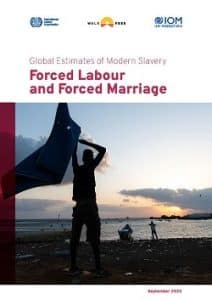 Fifty million people were living in modern slavery in 2021, according to the latest Global Estimates of Modern Slavery. Of these people, 28 million were in forced labour and 22 million were trapped in forced marriage. The number of people in modern slavery has risen significantly in the last five years. 10 million more people were in modern slavery in 2021 compared to 2016 global estimates. Women and children remain disproportionately vulnerable. Modern slavery occurs in almost every country in the world, and cuts across ethnic, cultural and religious lines. More than half (52 per cent) of all forced labour and a quarter of all forced marriages can be found in upper-middle income or high-income countries.
Fifty million people were living in modern slavery in 2021, according to the latest Global Estimates of Modern Slavery. Of these people, 28 million were in forced labour and 22 million were trapped in forced marriage. The number of people in modern slavery has risen significantly in the last five years. 10 million more people were in modern slavery in 2021 compared to 2016 global estimates. Women and children remain disproportionately vulnerable. Modern slavery occurs in almost every country in the world, and cuts across ethnic, cultural and religious lines. More than half (52 per cent) of all forced labour and a quarter of all forced marriages can be found in upper-middle income or high-income countries.
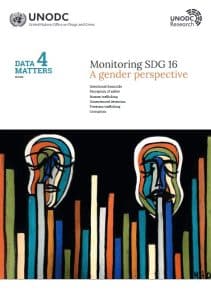
Monitoring SDG 16: A gender perspective (UNODC, Data Matters #4)
https://www.unodc.org/documents/data-and-analysis/statistics/DataMatters_4_2022.pdf
Certain types of violence, trafficking, and access to justice issues affect women more than men. Read about the latest Research Brief from the UN Office on Drugs and Crime (UNODC) to discover trends and monitor gender-specific progress on SDG 16.
Rapport sur la torture et autres peines ou traitements cruels, inhumains ou dégradants en République démocratique du Congo du 1er avril 2019 au 30 avril 2022
https://www.ohchr.org/sites/default/files/documents/issues/torture/2022-10-04/041022_Joint-report-on-torture-in-the-DRC-01042019-to-30042022.pdf
The vast majority of cases of torture in the Democratic Republic of the Congo (DRC) occur in conflict-affected areas where impunity is widespread, according to a UN report released on 5 October 2022. The report, issued by the UN Joint Human Rights Office in DRC (UNJHRO) and the UN Stabilization Mission in DRC (MONUSCO), covers the period between 1 April 2019 and 30 April 2022. The report presents UNJHRO’s findings that 93% of the 3,618 registered cases of torture, cruel, inhuman, or degrading treatment affecting 4,946 victims were documented in areas affected by armed conflict. Of this total, 492 were cases of sexual violence, affecting 761 victims. According to the report, members of the defence and security forces were responsible for 1,293 cases. A further 1,833 cases were attributed to members of armed groups, who sometimes acted on their own but in certain contexts subjected victims to torture in collusion with members of the security forces. The report shows that people were subjected to torture and ill-treatment while exercising their fundamental rights, such freedom of expression and peaceful assembly, or during detention.
The right to privacy in the digital age: Report of the Office of the United Nations High Commissioner for Human Rights (A/HRC/51, 4 August 2022)
English, French & Spanish: https://undocs.org/A/HRC/51/17
People’s right to privacy is coming under ever greater pressure from the use of modern networked digital technologies whose features make them formidable tools for surveillance, control and oppression, a new UN report has warned. This makes it all the more essential that these technologies are reined in by effective regulation based on international human rights law and standards. The report – the latest on privacy in the digital age by the UN Human Rights Office – looks at three key areas: the abuse of intrusive hacking tools (“spyware”) by State authorities; the key role of robust encryption methods in protecting human rights online; and the impacts of widespread digital monitoring of public spaces, both offline and online. The report details how surveillance tools such as the “Pegasus” software can turn most smartphones into “24-hour surveillance devices”, allowing the “intruder” access not only to everything on our mobiles but also weaponizing them to spy on our lives.
Humanitarian Affairs
Afghanistan crisis update: Women and Girls in Displacement, Factsheet II – September 2022
https://data.unhcr.org/en/documents/details/95688
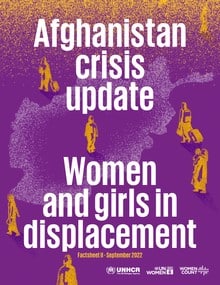 The fall of Afghanistan to Taliban rule in August 2021 continues to contribute to the deterioration of the rights and freedoms of women and girls. The Taliban have introduced restrictive measures that systematically exclude women and girls from social, economic and political life. In May 2022, the Taliban issued a directive indicating that women and girls must fully cover themselves in public, including their faces, and leave home only in cases of necessity, adding to existing restrictions on women’s work, freedom of movement and access to services. On 17 September 2021, the Taliban announced that girls should refrain from attending secondary school, a fact that was reiterated on 23 March 2022 by announcing secondary schools would remain closed for girls. Furthermore, rights violations continue to be reported, including forced marriages and beatings, and the detention of protesters, women’s rights activists and female security forces. All of this, along with conflict and climate change driven disasters, may be contributing to the displacement of women and girls, both within and outside the country. This factsheet is the second in a series that examines the changing situation in Afghanistan. It was produced by the United Nations Entity for Gender Equality and the Empowerment of Women (UN Women) and the Office of the United Nations High Commissioner for Refugees (UNHCR), using data from UNHCR, the United Nations Office for the Coordination of Humanitarian Affairs (OCHA) and other sources as indicated. Given the rapidly shifting situation in the country, estimates are likely to change over time. Trends or events taking place after June 2022 will be reflected in future factsheets of this series.
The fall of Afghanistan to Taliban rule in August 2021 continues to contribute to the deterioration of the rights and freedoms of women and girls. The Taliban have introduced restrictive measures that systematically exclude women and girls from social, economic and political life. In May 2022, the Taliban issued a directive indicating that women and girls must fully cover themselves in public, including their faces, and leave home only in cases of necessity, adding to existing restrictions on women’s work, freedom of movement and access to services. On 17 September 2021, the Taliban announced that girls should refrain from attending secondary school, a fact that was reiterated on 23 March 2022 by announcing secondary schools would remain closed for girls. Furthermore, rights violations continue to be reported, including forced marriages and beatings, and the detention of protesters, women’s rights activists and female security forces. All of this, along with conflict and climate change driven disasters, may be contributing to the displacement of women and girls, both within and outside the country. This factsheet is the second in a series that examines the changing situation in Afghanistan. It was produced by the United Nations Entity for Gender Equality and the Empowerment of Women (UN Women) and the Office of the United Nations High Commissioner for Refugees (UNHCR), using data from UNHCR, the United Nations Office for the Coordination of Humanitarian Affairs (OCHA) and other sources as indicated. Given the rapidly shifting situation in the country, estimates are likely to change over time. Trends or events taking place after June 2022 will be reflected in future factsheets of this series.
Hunger Hotspots: FAO-WFP early warnings on acute food insecurity; October 2022 to January 2023 Outlook
https://www.wfp.org/publications/hunger-hotspots-fao-wfp-early-warnings-acute-food-insecurity-october-2022-january-2023
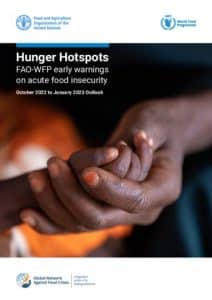 The number of people facing acute food insecurity worldwide is expected to continue to rise precipitously, as the food crisis tightens its grip on 19 ‘hunger hotspots’ – driven by rising conflict, weather extremes, and economic instability aggravated by the pandemic and the ripple effects of the crisis in Ukraine, a joint UN report released on 21 September 2022 has found. The report – issued by the Food and Agriculture Organization of the United Nations (FAO) and the UN World Food Programme (WFP) – calls for urgent humanitarian action to save lives and livelihoods and prevent famine in hotspot countries where acute food insecurity is expected to worsen from October 2022 to January 2023. The report lays out country-specific recommendations on priorities for anticipatory action – short-term protective measures to be put in place before new humanitarian needs materialize; and emergency response – actions to address existing humanitarian needs.
The number of people facing acute food insecurity worldwide is expected to continue to rise precipitously, as the food crisis tightens its grip on 19 ‘hunger hotspots’ – driven by rising conflict, weather extremes, and economic instability aggravated by the pandemic and the ripple effects of the crisis in Ukraine, a joint UN report released on 21 September 2022 has found. The report – issued by the Food and Agriculture Organization of the United Nations (FAO) and the UN World Food Programme (WFP) – calls for urgent humanitarian action to save lives and livelihoods and prevent famine in hotspot countries where acute food insecurity is expected to worsen from October 2022 to January 2023. The report lays out country-specific recommendations on priorities for anticipatory action – short-term protective measures to be put in place before new humanitarian needs materialize; and emergency response – actions to address existing humanitarian needs.
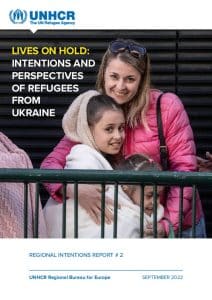 Lives on Hold: Intentions and Perspectives of Refugees from Ukraine #2 (UNHCR)
Lives on Hold: Intentions and Perspectives of Refugees from Ukraine #2 (UNHCR)
https://data.unhcr.org/en/documents/details/95767
Following the first intentions survey done in 6 countries neighbouring Ukraine between May and June 2022, this report presents updated findings regarding intentions of refugees from Ukraine, in-depth analysis of the factors influencing their decisions, and key insights into their current socio-economic situation and profiles, based on the second round of UNHCR’s intentions survey covering 43 countries across Europe and beyond between August and September 2022, with over 4,800 surveys completed.
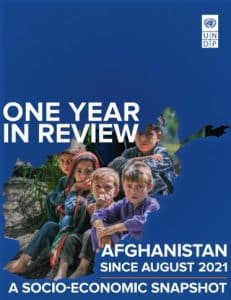 One Year in Review-Afghanistan since August 2021 (UNDP)
One Year in Review-Afghanistan since August 2021 (UNDP)
https://www.undp.org/afghanistan/publications/one-year-review-afghanistan-august-2021
The political change after 15 August 2021 plunged the country into a humanitarian and economic crisis that devastated peoples’ lives and livelihoods. As the De Facto Authorities (DFA) mark one year in power, the situation in Afghanistan remains precarious and uncertain. Drawing upon available data from various sources, “One Year in Review” provides a snapshot of changes in peoples’ socio-economic situation since August 2021.
Justice and International Law
Pay transparency legislation: Implications for employers’ and workers’ organizations (ILO)
https://www.ilo.org/travail/info/publications/WCMS_849209/lang–en/index.htm
On average, women, are paid about 20 per cent less than men, globally. While individual characteristics such as education, working time, occupational segregation, skills and experience, explain part of the gender pay gap, a large part is due to discrimination based on gender. In addition, women have been among the worst affected by the COVID-19 pandemic, including in terms of their income security, disproportionate representation in some hardest-hit sectors, and the unequal and gendered division of family responsibilities. These factors negatively affected women’s employment, threatening to reverse decades of progress made towards gender equality. The new ILO study finds that pay transparency measures can help to address the gender pay gap and reduce broader gender inequalities in the labour market. Pay transparency may provide workers with the information and evidence they require to negotiate pay rates and provide them with the means to challenge potential pay discrimination. For employers pay transparency can help to identify and address pay discrimination that might otherwise negatively affect the functioning of the enterprise and their reputation.
Drug Control, Crime Prevention and Counter-terrorism
5 Thematic guides on Protecting Vulnerable Targets Against Terrorist Attacks (UNOCT)
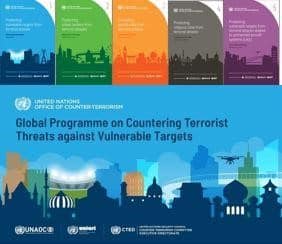 The United Nations Office of Counter-Terrorism (UNOCT) launched five new specialized guides (modules) dedicated to the protection of particularly vulnerable targets against terrorist attacks. While “vulnerable targets” refers both to critical infrastructure (e.g. public transportation systems, energy sector) and public places or ‘soft targets’ (e.g. tourist venues, urban centers, religious sites), these guides focus on the latter. The 5 modules are presented by the United Nations Global Programme on Countering Terrorist Threats Against Vulnerable Targets, which is led by UNOCT and jointly implemented with CTED, UNICRI and UNAOC:
The United Nations Office of Counter-Terrorism (UNOCT) launched five new specialized guides (modules) dedicated to the protection of particularly vulnerable targets against terrorist attacks. While “vulnerable targets” refers both to critical infrastructure (e.g. public transportation systems, energy sector) and public places or ‘soft targets’ (e.g. tourist venues, urban centers, religious sites), these guides focus on the latter. The 5 modules are presented by the United Nations Global Programme on Countering Terrorist Threats Against Vulnerable Targets, which is led by UNOCT and jointly implemented with CTED, UNICRI and UNAOC:
Module 1: Introduction – Protection vulnerable targets from terrorist attacks [EN] [FR]
Module 2: Protecting urban centres from terrorism attacks [EN] [FR]
Module 3: Protecting tourist sites from terrorism attacks [EN] [FR]
Module 4: Protecting religious sites from terrorism attacks [EN] [FR]
Module 5: Protecting vulnerable targets from terrorist attacks involving unmanned aircraft systems (UAS) [EN] [FR]
Also available in Arabic and Russian: https://www.un.org/counterterrorism/publications
Addressing the linkages between illicit arms, organized crime and armed conflict (UNIDIR / UNODC)
https://unidir.org/publication/addressing-linkages-between-illicit-arms-organized-crime-and-armed-conflict
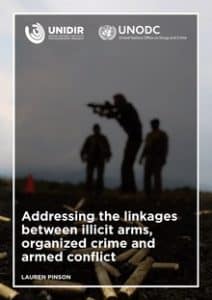 Illicit arms and ammunition link conflict to crime as well as crime to conflict. Illicit arms can both enable and fuel an armed conflict, while different conflict phases provide opportunities for the diversion of arms and a potentially lucrative income source for organized arms trafficking networks. To date, there has been limited research examining the linkages between all three of these security challenges. In response to this knowledge gap, this issue brief – produced in collaboration with the United Nations Office on Drugs and Crime (UNODC) – explores the multiple connections between illicit arms, organized crime and armed conflict in relation to (1) the source of illicit arms supply, (2) the process of illicit arms acquisition, and (3) shifts in the dynamics of armed conflict and organized crime. It also provides key considerations to help inform responses to address these interrelated challenges by integrating conventional arms control measures, conflict prevention strategies, and criminal justice responses.
Illicit arms and ammunition link conflict to crime as well as crime to conflict. Illicit arms can both enable and fuel an armed conflict, while different conflict phases provide opportunities for the diversion of arms and a potentially lucrative income source for organized arms trafficking networks. To date, there has been limited research examining the linkages between all three of these security challenges. In response to this knowledge gap, this issue brief – produced in collaboration with the United Nations Office on Drugs and Crime (UNODC) – explores the multiple connections between illicit arms, organized crime and armed conflict in relation to (1) the source of illicit arms supply, (2) the process of illicit arms acquisition, and (3) shifts in the dynamics of armed conflict and organized crime. It also provides key considerations to help inform responses to address these interrelated challenges by integrating conventional arms control measures, conflict prevention strategies, and criminal justice responses.
Documenting international crimes and human rights violations for accountability purposes: Guidelines for civil society organisations (ICC / EUROJUST)
https://www.icc-cpi.int/sites/default/files/2022-09/2_Eurojust_ICC_CSOs_Guidelines_2-EN.pdf
Eurojust and the Office of the Prosecutor at the International Criminal Court (ICC) published on 21 September 2022 practical guidelines for civil society organisations on documenting core international crimes, such as war crimes and crimes against humanity. This will empower as well as support civil society organisations that seek to collect and preserve information to contribute to investigations and prosecutions at the national level or before the ICC. The guidelines aim to assist in fighting impunity and have been drawn up building on the expertise of the Office of the Prosecutor at the ICC, Eurojust, the Genocide Network, civil society organisations, national prosecutors and international partners.
Newsletter Archive: https://unric.org/en/unric-info-point-library-newsletter-archive



